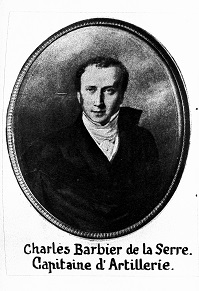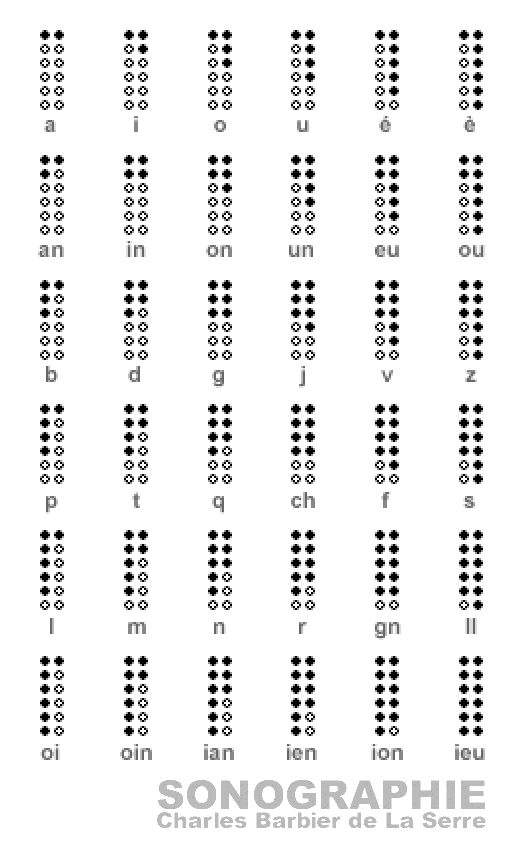
A former soldier, Nicolas-Marie-Charles Barbier de la Serre, invented the use of raised dots for writing which Louis Braille later used for his alphabet. Although Charles Barbier is relatively unknown to the general public, he was a key figure in history and in Louis Braille’s destiny.
Nicolas-Marie-Charles Barbier de la Serre, was born in Valenciennes on 18 May 1767. He began an active military career in 1784, eventually becoming an artillery captain. He left the army in 1792, and moved to the United States. He did not return to France until the beginning of the 19th century.

Raised-point writing, an ingenious system
Barbier began by creating a form of shorthand called Expeditive, which he published in 1809. In that publication, he also introduced a form of writing without pen and ink, using a knife to make cuts in paper that represented letters.
In 1815, he published a book proposing a dozen different forms of writing. Some were simplified for children, some were codes intended for diplomats, and one consisted of raised points for the use of blind people.
He sent instructions and tools for raised-pointed writing to the director of the Royal Institute for Blind Youth in 1821, when Louis Braille was a pupil and boarder there.
The code existed in both alphabetical and phonetic form. Barbier felt that the phonetic system would be the most widely applicable system for blind people, but the students at the school preferred the alphabetical method. It consisted of raised dots on a two-column grid of six dots, readable by touch. His method did not allow for capital letters, punctuation, or mathematical symbols. However, it did allow the students to take notes and write down their thoughts.
Raised dots, the basis of Braille
Louis Braille was 12 years old when Charles Barbier’s system was introduced at the school. However, he found the symbols used more dots than could comfortably fit under a finger, and he wanted to extend the system to allow for mathematics and music.
For eight years, Louis Braille worked on a more compact and versatile system, which he published in an early form in 1829.
It is usually written that Charles Barbier had an antagonistic relationship with Louis Braille. But in reality, he never opposed Braille’s invention. Proof of this can be found in a note from Captain Barbier, which he wrote in 1833, after having asked Alexandre-René Pignier, director of the Royal Institution for the Young Blind at the time, for a copy of Louis Braille's process: "The author whom I do not know has rightfully earned my esteem by working for the well-being of his companions in misfortune". Shortly afterwards, he wrote to Louis Braille to congratulate him.
Captain Barbier de la Serre died in Paris on 22 April 1841 at the age of 73.